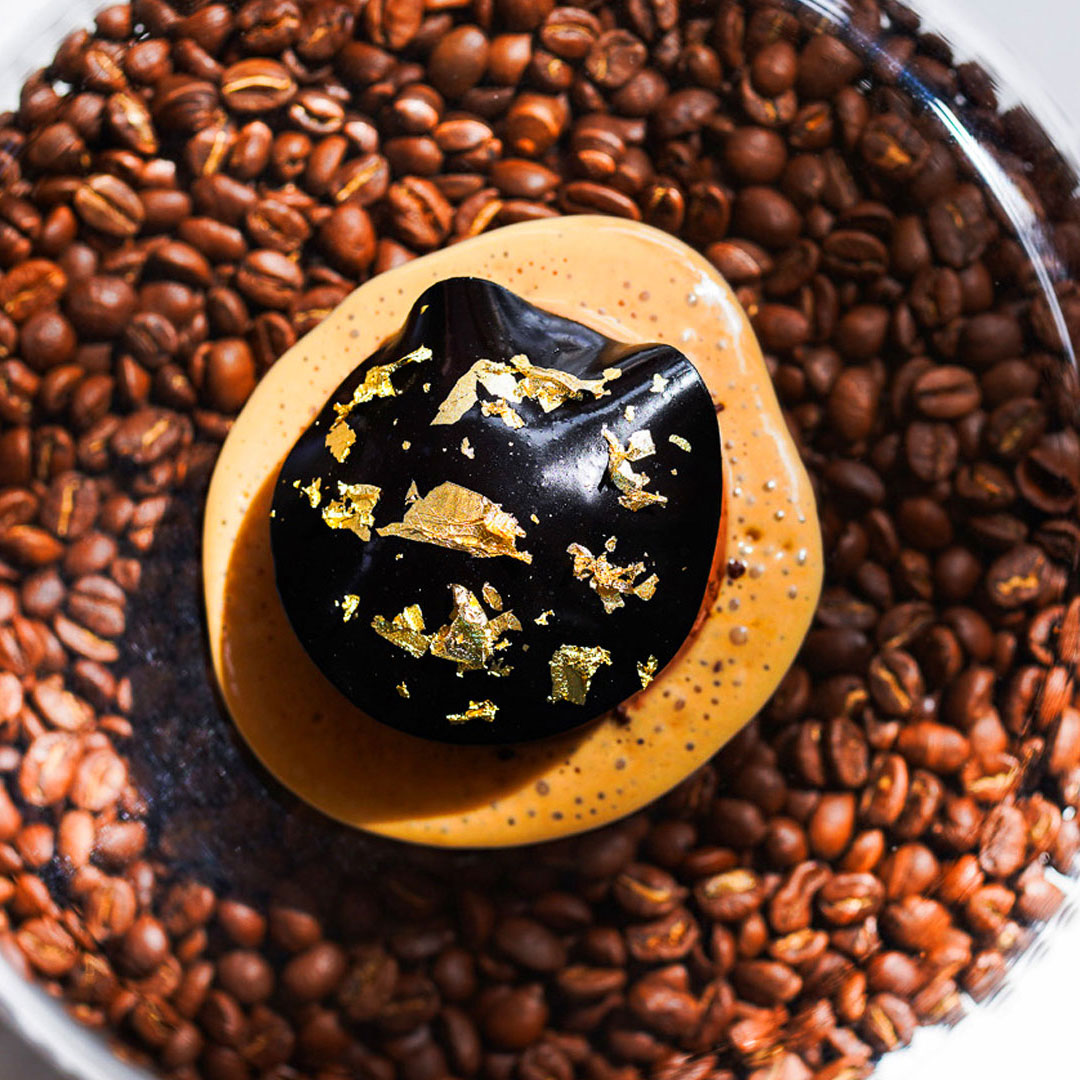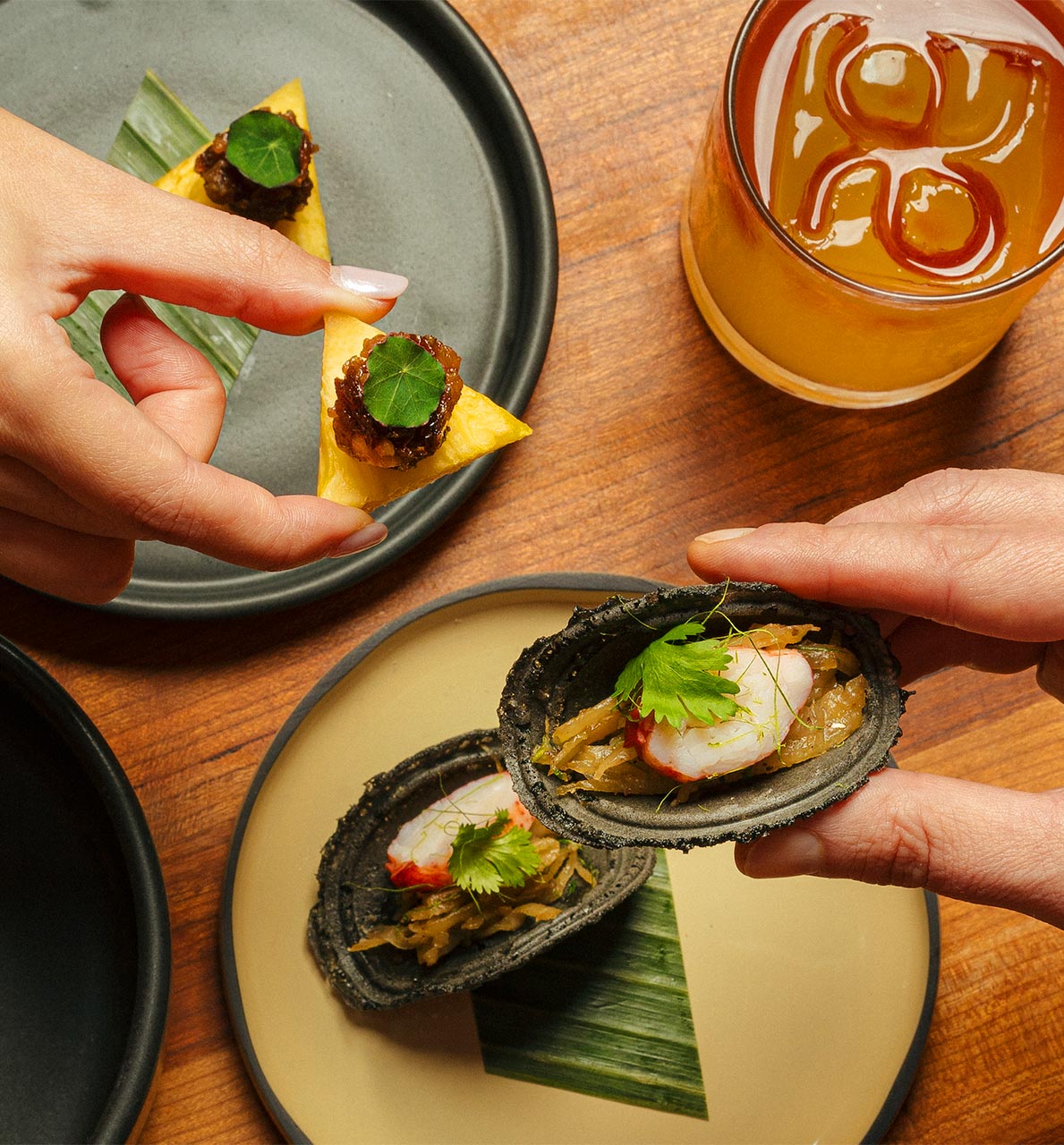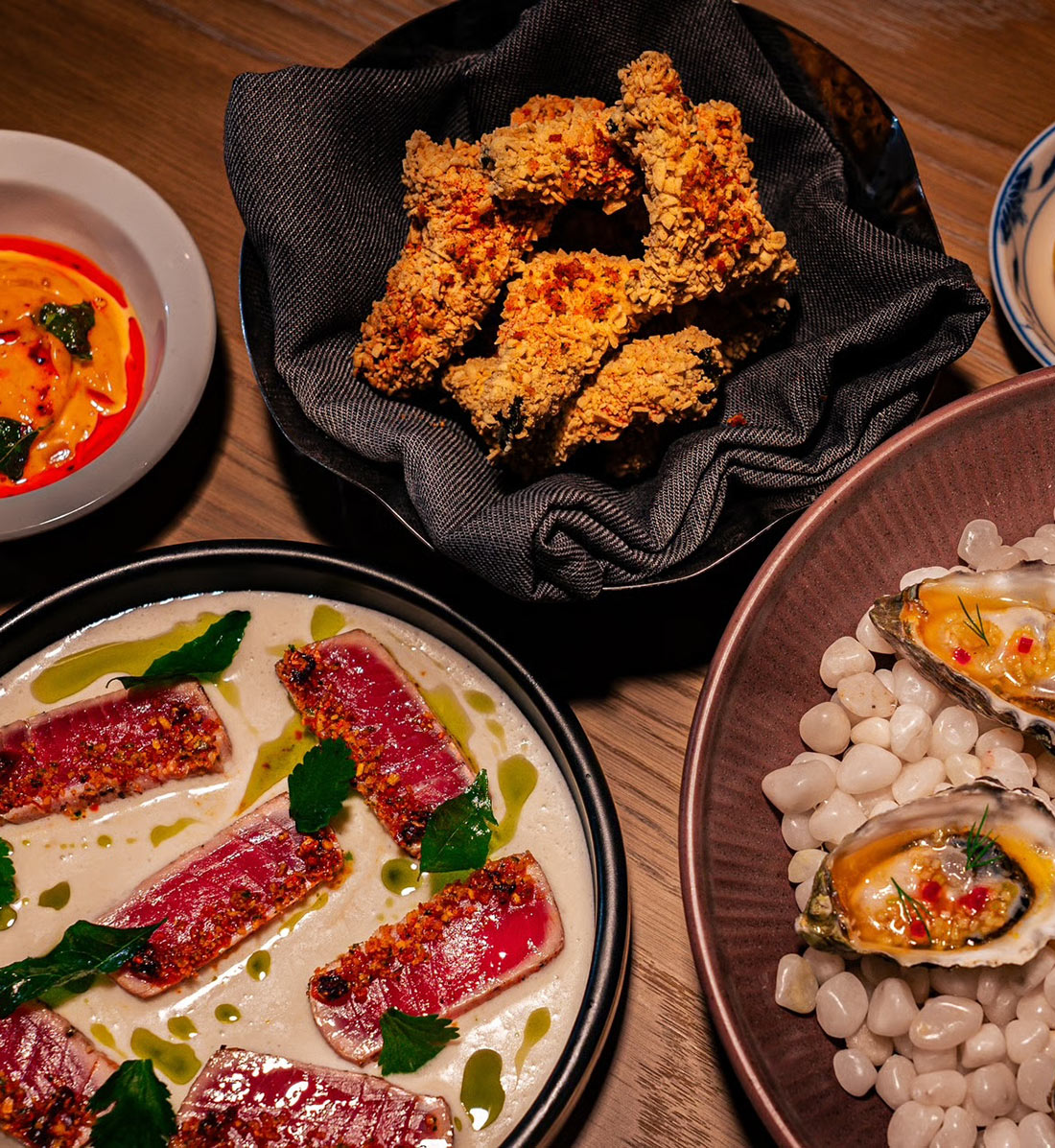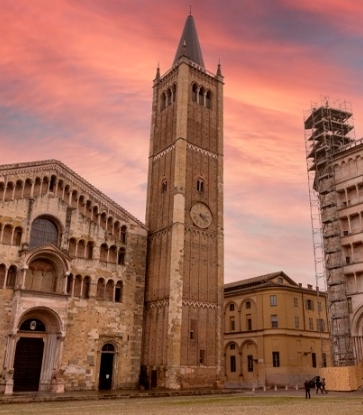Just shy of its four-year anniversary, and on the heels of receiving its first MICHELIN Star, a freak fire broke out on August 12, 2022 from an unused electrical outlet in the kitchen of Washington, D.C.’s fine dining jewel Reverie, the Capital’s beloved globally influenced, seafood-forward tasting menu boîte. “I lost everything,” admits chef and owner Johnny Spero. “I collapsed on the cobblestone alleyway at 4:30 AM staring into the window.”
He had only departed the restaurant seven hours earlier, “and I came back to [see that] the space that I had to beg, borrow, and steal to open—and keep open—was gone.”
After a 24-hour reset, Spero—who was weeks away from opening more casual, Basque-inspired Bar Spero—knew Reverie would have to return. Friends launched a GoFundMe to help raise funds to cover employees’ final paychecks, and he eventually got a substantial enough payout from insurance that ultimately enabled him to reopen Reverie in its original historic brick Georgetown building. After 19 months, Reverie relaunched with a mature and elegant new look, and a re-concepted open floorplan.
“We put a collared shirt on, but left it untucked,” says Spero of the redesign. His intent was to fine tune the space to feel just a bit more refined, but not stuffy. He also chose to downsize Reverie’s original 70 seats to just 32 and remove his chef’s counter.
“I think the soul of the original Reverie is still there; we just tried to clean up and focus,” says the chef, specifically referencing his decision to concentrate his tasting menu solely on New England-sourced seafood. While Reverie has highlighted seafood in the past, guests also have had the option to add on courses such as a dry-aged duck breast brushed with a reduced beet and black licorice sauce. Today, Reverie is entirely meat-free. The menu still spans roughly 12-16 dishes, and now costs $255 instead of $225.
Three months into his reborn restaurant, we caught up with Spero to see how he’s feeling, uncover what guests can expect from their next meal, and understand how a disastrous incident has only made Reverie stronger.
Congrats on the reopening, how are you feeling?
Man, I probably should go to therapy at some point. I'm still a little in disbelief of what happened. I barely wrapped my head around opening, being a father, navigating Covid, and then this happened. So, realizing now, we should talk about all of this a lot more. Not just fires and negative life events, but the things that we need to celebrate. As an owner and operator, it's really easy to get lost and stay in that dark place, look at everything that others have, and question why you don't have the same success, when at the same time some people are probably looking at you the same way.
Tell us about the rebuild—what was the biggest obstacle you had to overcome?
Insurance, insurance, insurance. That was the biggest hurdle. The amount we got back and the duration of time the process took really affected me. Mentally, I was also a little burnt out, and I was fighting with the idea of walking away or starting over, and what was best for my family.
When you had your old space, where there any details that you thought, ‘I wish I had done or built this differently,’ which you were able to amend this time around?
Originally, we definitely didn’t build a space conducive to serving tasting menus. We had very little counter space for our team to work on together, and wine storage was a mess. That was absolutely the first thing that went through my head when we decided to rebuild. Not just how could we make the experience better for the guests, but for us, too. I couldn’t make the space any bigger, but there were so many different ways we could adjust the layout and flow. We didn’t have a bottomless pit of money and there were some restrictions—like where our hood had to be—but we tore it apart and completely changed everything. Our entryway is now a beautiful stone garden, our dining room tables are all round, and our chairs are way nicer. Everything guest facing is just way more dialed-in.

What did you do while the restaurant was being rebuilt?
I was at Bar Spero every day working on that menu. We basically used that space as a test kitchen for Reverie 2.0. During that time, I also traveled once or twice a month to cook at various restaurants around the world like Evett in Seoul and LURRA˚ in Kyoto. I dubbed these pop-ups ‘Reverie on the Road.’
For fans of the old Reverie, are any signature dishes returning?
The only version of a dish that survived the fire is our Anson Mills Carolina Gold rice, crab, and egg yolk. I wanted to make sure that with the new space we took the time to rebuild the menu as well.
How has your culinary perspective changed since first opening Reverie?
Over the last four years we have solidified our process. If it doesn't feel genuine, then we don't do it. If we put something on the menu and it feels like we are just doing it to check a box, it doesn't stay on long. There was a moment when we were going to put everyone in suits and buy nice jackets for all the cooks, but it felt too dressed up and disingenuine. I tried to wear a chef jacket—I just couldn’t do it. I still wear skinny jeans and black t-shirts. I just feel more comfortable and like myself. Our space kind of reflects that, too. Our kitchen set-up is simple, minus a freeze dryer, and it does the trick. Kitchens like Mugaritz produce magic out of the simplest of spaces; maybe one day if we make a ton of money we will invest back into the space and upgrade, but I feel like I'm the kind of guy who would rather maintain and drive an early 1990s Audi Coupé Quattro then buy a brand-new McLaren.


What’s your biggest takeaway from this all?
At the end of the day, the restaurant is less about the physical space, but more about the ideas—and how you touch the food—that really defines it. We were lucky enough to take the restaurant all over the world and it didn't matter which kitchen or where we were sourcing our ingredients, it always felt and tasted like Reverie.
What’s coming up next for you and what are you most excited about right now?
I’m most excited to see how having both restaurants open at the same time pushes each other. We've already made some changes to Bar Spero, adjusting the menu to a prix fixe in the dining room and à la carte in the bar. I’ve realized both restaurants tell a story—and giving our team a little more control in assisting diners with how to navigate each experience changes everything. I don't know what the future holds, really. I want to find a way to make both these restaurants sustainable on all fronts, from sourcing ingredients to my staff's work-life balance, to the financials. I'd love to explore options outside the city, too. I think what we do best is embrace the area and space that we are in, and what's available, and use our Reverie and Bar Spero format to create some pretty exciting things. We saw how that worked in Kyoto, Seoul, Brooklyn, Maine, San Francisco and Oakland, so who knows what we will do.


Hero image: Chef Johnny Spero



















